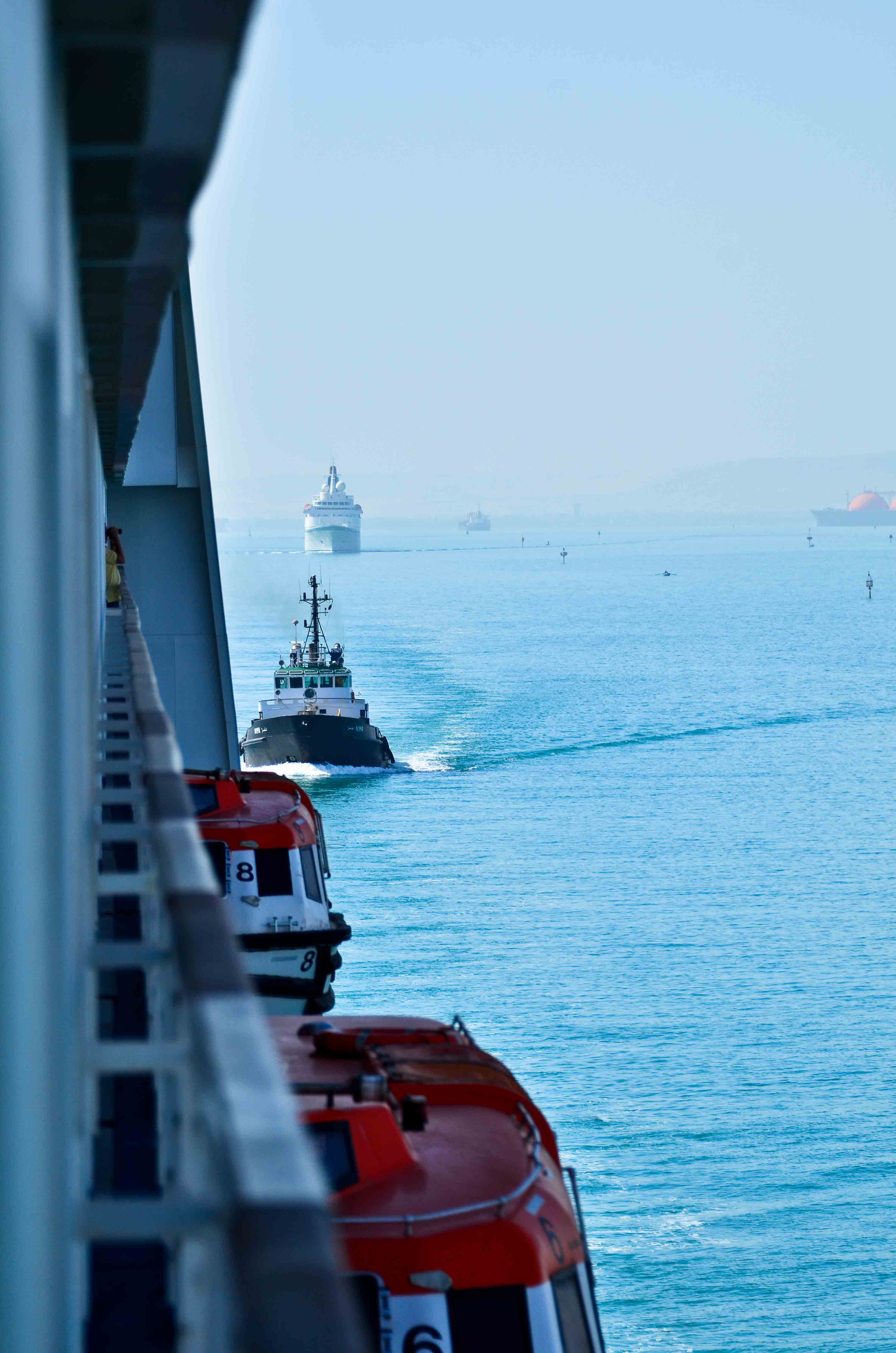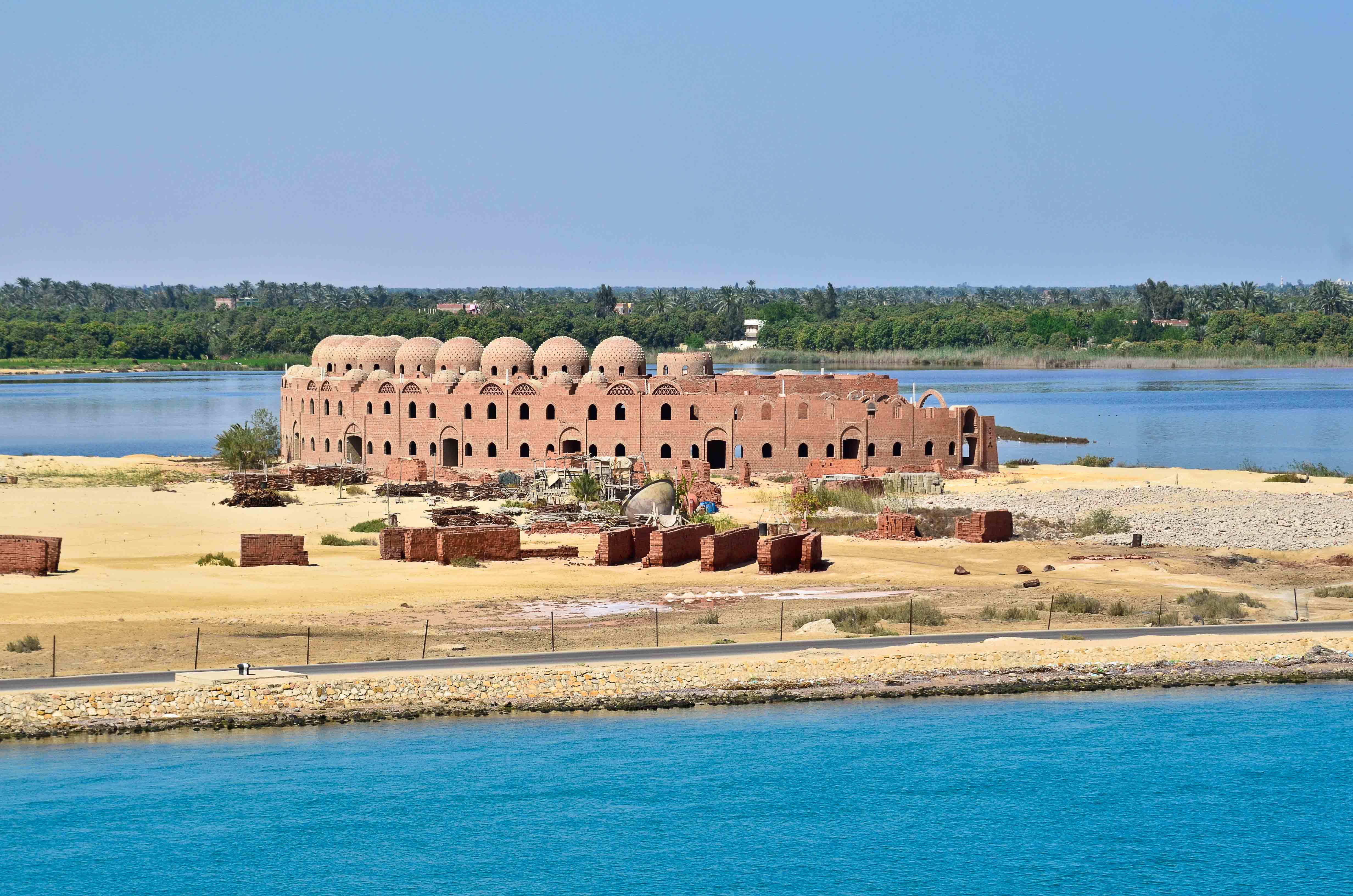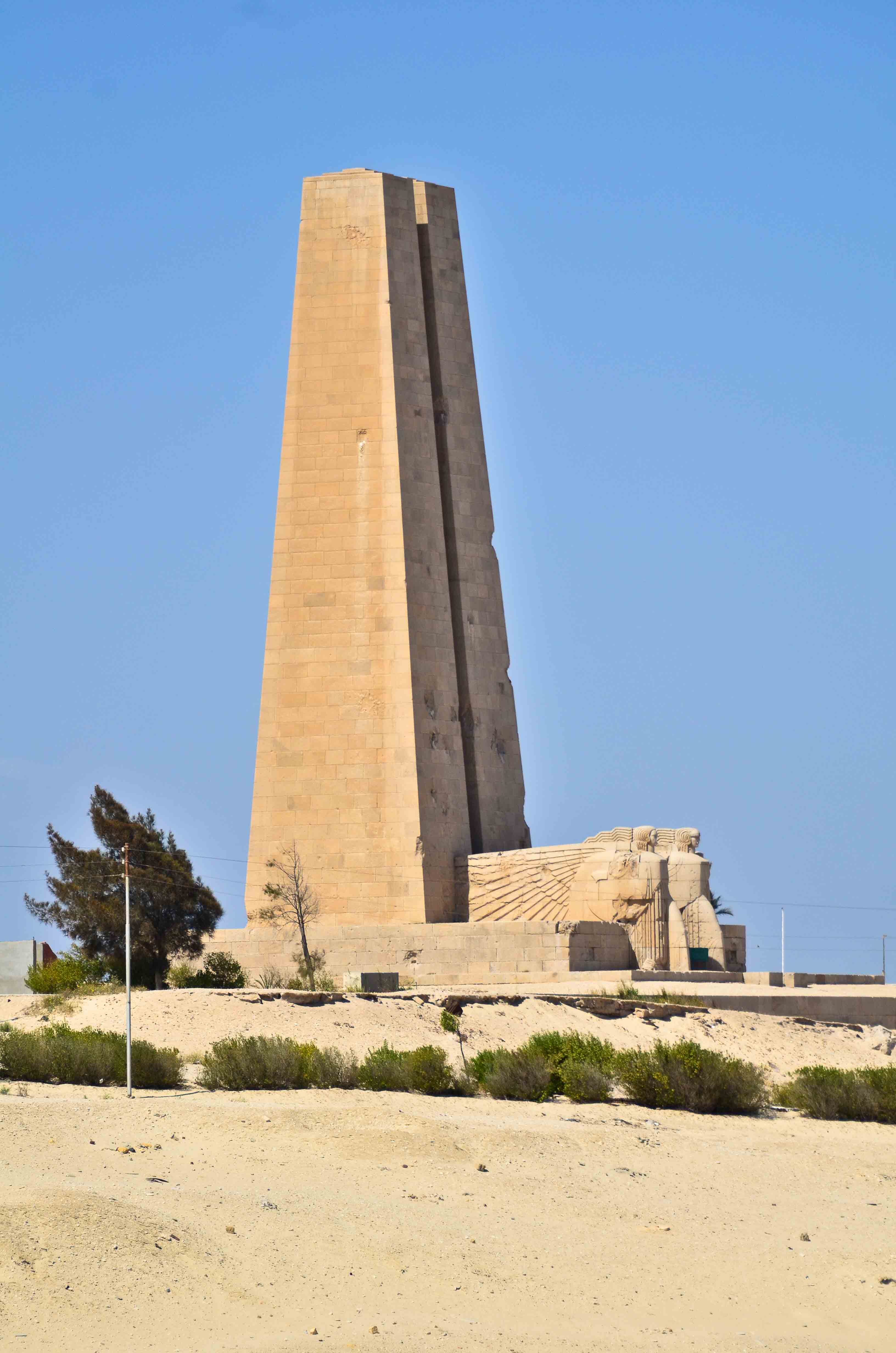The Suez Canal, also known by the nickname “The Highway to India”, is an artificial sea-level waterway in Egypt, connecting the Mediterranean Sea and the Red Sea. It allows transportation by water between Europe and Asia without the need to navigate around Africa.
Here is the Top Picture Gallery for the Suez Canal:
Click here for the complete Picture Gallery for the Suez Canal.
There is one shipping lane and two passing areas. On a typical day, three convoys transit the canal, two southbound and one northbound. The first southbound convoy enters the canal in the early morning hours and proceeds to the Great Bitter Lake, where the ships anchor out of the fairway, awaiting passage of the northbound convoy. The northbound convoy passes the second southbound convoy, which moors in Ballah-Bypass. The passage takes between 11 and 16 hours at a speed of 8 knots (9 mph).
The low speed helps prevent erosion of the canal banks by ships’ wakes. Unlike the Panama Canal, that has multiple locks to properly maintain the sea level between the Atlantic and Pacific Oceans, the Suez Canal contains no locks so seawater flows freely through the canal.
During construction there was much controversy about the level of the seas on both sides of the proposed canal. It was speculated, that if they were wrong, all of the water from the Mediterranean would flow into the Red Sea (or vice versa) and the earth would tilt on its’ access due to the massive weight shift associated with the water flow. This would, of course, destroy the world. Needless to say they carefully took the measurements multiple times!
The digging of the canal took approximately 10 years using mostly forced (slave) Egyptian workers. Some sources estimate that over 30,000 people were working on the canal at any given period, that altogether more than 1.5 million people from various countries were employed, and that thousands of laborers died on the project. While there was much controversy about the canal at the time, it became operational in 1869.
The canal is owned and maintained by the Suez Canal Authority (SCA) of the Arab Republic of Egypt. Under international treaty, it may be used “in time of war as in time of peace, by every vessel of commerce or of war, without distinction of flag.” While the Canal has been closed during war time, including briefly during WWI and then again during the Arab-Israeli wars of 1967 and 1973, it has widely remained open.
Between 2008 and 2010, it is estimated that the canal has lost 10% of traffic due to the threat of piracy (Somalia), and another 10% due to the financial crisis. An oil tanker going from Saudi Arabia to the United States has 2,700 miles longer to go when taking the route south of Africa rather than the canal.
The Voyager was the lead vessel in a convoy of 20 ships heading north today. It was slow, steady going but it was nice to be in first place along the way! In general, the surroundings were surprisingly green, but then there is a lot of water available along the way. We passed by some memorials and a bridge or two, plenty of what appeared to be small military or security outposts but otherwise it was a fairly uneventful crossing. Uneventful is fine with us in this part of the world!



.jpg)


